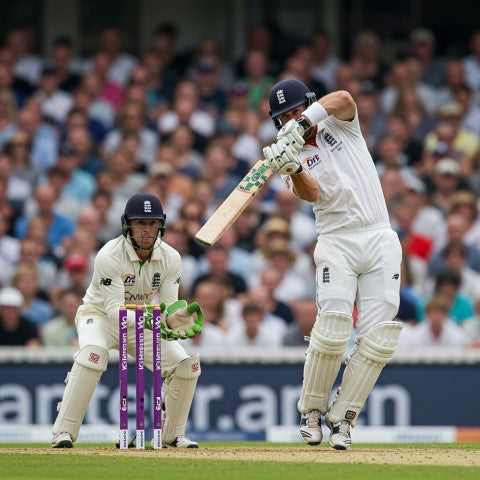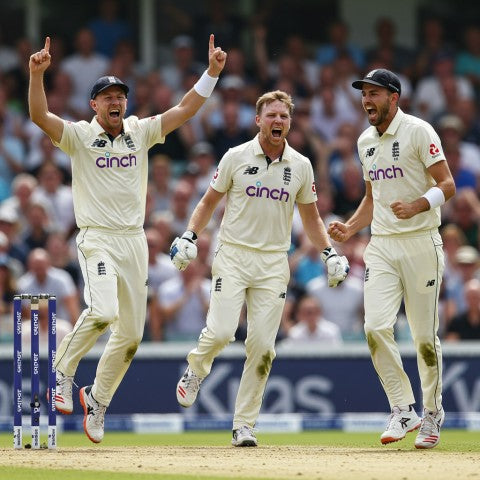How Cricket Academies Are Shaping the Next Generation

Cricket has long been a sport where raw talent could take you far. But in today’s hyper-professionalised landscape, talent alone is no longer enough. The next generation of cricketing stars isn’t emerging from the backyard or the local park — they’re coming from high-performance environments engineered for excellence. In short, cricket academies have become the beating heart of the game’s future.
Across the globe, national boards, franchises, and even former players are investing heavily in youth academies. Why? Because the modern game demands more — more precision, more athleticism, more mental resilience. From state-of-the-art facilities to data-driven training, the best academies are producing athletes who are match-ready before they hit 20.
Whether you’re watching a teenager smashing sixes in the IPL or a debutant outfoxing veterans in a Test match, chances are they’ve spent years inside an academy setup. This is how cricket academies are shaping the next generation — by fusing science, discipline and opportunity into a production line for future greatness.
In this article, we explore how these academies work, where they’re thriving, and what it means for the evolution of cricket globally.
1. From Backyard to Elite: Why Cricket Academies Matter More Than Ever
In previous eras, cricket heroes were often self-made — nurtured by gully cricket, school matches and, occasionally, luck. That model still exists in parts of the world, but it’s no longer the rule. Today, elite cricket is a product of structure, investment and years of curated development — and this is how cricket academies are shaping the next generation.
Academies provide access. Not just to nets and coaches, but to exposure. Talented young players now find themselves in front of selectors much earlier, thanks to academy tournaments, inter-academy leagues, and performance databases shared across cricketing bodies.
They also teach discipline. Fitness regimes are strict, match simulations are relentless, and technical training is dissected down to micro-movements. Athletes aged 14 are often already learning media training, diet plans, and injury prevention — skills that used to come much later, if at all.
Moreover, academies create equity. In countries like India, South Africa, and England, players from rural or disadvantaged backgrounds are now scouted and given access to professional pathways that previously felt out of reach.
As cricket grows in competitiveness, the role of academies becomes non-negotiable. If the game is to keep evolving, the next generation can’t just be talented — they have to be trained, tested, and ready. That’s exactly what these systems are delivering.
2. Inside the System: How Cricket Academies Are Shaping the Next Generation in India and Australia
India and Australia — two giants of world cricket — take dramatically different paths when it comes to talent development. Yet both nations are perfect case studies in how cricket academies are shaping the next generation.
In India, the system is vast, layered, and decentralised. It starts at the grassroots with district and state academies, often linked to school tournaments and BCCI-recognised scouting networks. Private academies like MS Dhoni Cricket Academy or the Sehwag Cricket Academy supplement this with elite facilities and personal coaching.
What’s striking in India is the sheer volume. Thousands of players pass through local academies, but the pyramid narrows quickly, with only the top fraction moving on to state sides or IPL academies like those run by Mumbai Indians and Chennai Super Kings. Competition is brutal, but so is the infrastructure — with bio-mechanic labs, nutritionists, and video analysts now standard in top academies.
In contrast, Australia’s approach is smaller in scale but deeply strategic. The National Cricket Centre in Brisbane acts as a finishing school, while state-level academies in places like Victoria and New South Wales focus on holistic development. Mental health support, leadership coaching, and sports science are deeply integrated.
Both systems are producing stars. Shubman Gill, Prithvi Shaw, and Ruturaj Gaikwad are academy products in India. Australia counters with Cameron Green, Will Pucovski, and Todd Murphy — all groomed through institutional development.
Different routes. Same result. World-class cricketers shaped by world-class systems.
3. Technology in Training: AI, Data and the New Age of Cricket Development
One of the most radical shifts in how cricket academies are shaping the next generation is the integration of technology. Gone are the days of just relying on a coach’s eye. Today, cameras, sensors and software are just as important as batting gloves and helmets.
Academies across the world are using motion capture to analyse bowling actions, batting swings, and footwork. AI-powered software like StanceBeam or PitchVision provide instant feedback on angle, timing, and bat speed. Coaches are no longer just telling players what to do — they’re showing them, frame by frame.
Data analytics plays a huge role. Player workloads are tracked to avoid injuries. Performance under pressure is logged and reviewed. Some elite academies even simulate match scenarios using VR headsets, helping young cricketers visualise and react to high-stakes situations before they ever face them on a real pitch.
This tech-driven training isn’t just about flashy gadgets — it’s about efficiency. Players can now make micro-adjustments within days instead of months. Feedback loops are faster. Learning curves are steeper. And by the time these players hit professional circuits, they’ve already experienced a level of scrutiny that rivals the international game.
The modern cricket academy is part sports lab, part high-performance factory. And that’s exactly what today’s game demands.
4. The Rise of Private Academies: Franchise-Led and Player-Owned Initiatives
While national boards still run many elite academies, the private sector is playing an increasingly influential role in how cricket academies are shaping the next generation. IPL franchises, former players, and international organisations are all setting up training centres designed to bridge the gap between raw talent and professional readiness.
Take MS Dhoni, for example. His academy now spans multiple Indian cities and even has branches in the UAE and Singapore. It’s more than just a name — it’s a structured curriculum, run by BCCI-accredited coaches, offering world-class exposure to kids aged 7 and up.
IPL franchises are also heavily involved. Mumbai Indians and Rajasthan Royals both run youth academies that not only teach cricket but introduce players to professional setups, recovery routines, and team strategy. These are incubators for future IPL stars — with direct pipelines into age-group trials and camps.
Even outside India, private academies are booming. In England, the Gary Kirsten Academy and Surrey’s private coaching school offer bespoke coaching services for young players with ambition. In South Africa and Australia, player-led initiatives are starting to supplement state development models.
What’s the appeal of private academies? Speed, access and ambition. Players get fast-tracked into elite coaching environments without waiting for state or board recognition. And for many, that’s the difference between fizzling out and breaking through.
5. Women’s Cricket and the Academy Pipeline
Until recently, academy-level support for girls in cricket was patchy at best. But that’s changing rapidly — and it’s a critical part of how cricket academies are shaping the next generation.
The rise of tournaments like the Women’s Premier League (WPL), The Hundred (Women), and expanded international schedules has made women’s cricket not just viable, but essential. As a result, national boards and private academies are finally investing in tailored programmes for young female athletes.
In India, the BCCI now mandates structured age-group development pathways for women — including zonal academies and scouting initiatives. In Australia, the Women’s Big Bash League has inspired regional academies to offer equal opportunities for girls, with some now enrolling more female players than male.
Coaching has also improved. More female coaches and role models are now entering the academy circuit, providing relatable mentorship and technical insights specific to the women’s game — such as slower ball variations or wrist spin strategies that differ due to physiology and biomechanics.
Moreover, sponsors are finally stepping in. Nike, Boost, and other brands are helping academies fund scholarships, equipment, and tournaments — further increasing access.
The pipeline is still narrower than the men’s, but the momentum is real. The next Meg Lanning or Harmanpreet Kaur may already be training — we just need to keep building the runway.
6. Building Mental Toughness: Psychology, Pressure and Professional Readiness
Cricket may be a technical game, but its greatest battles are mental. That’s why emotional resilience is now a core component of how cricket academies are shaping the next generation.
Elite academies are hiring sports psychologists, performance coaches, and mindfulness trainers to help players navigate stress, failure, and public scrutiny. These tools are no longer a luxury — they’re essential, especially in the high-pressure T20 era where games turn on a single ball.
Young players are being trained in how to handle social media criticism, media interviews, and dressing room dynamics. Role-playing exercises simulate everything from sledging to captaincy responsibilities. For many, these sessions are more valuable than any net session.
Academies also offer support for off-field struggles: managing homesickness, balancing studies, and coping with injury layoffs. The goal is to prepare cricketers not just to perform, but to endure — mentally and emotionally.
Some of the most successful graduates — from Joe Root to KL Rahul — have credited academy environments with teaching them how to handle adversity. The game has evolved, and so has the preparation. Today, it’s not enough to bat well — you have to think well, recover well, and stay grounded.
7. Global Footprints: How Cricket Academies Are Expanding to the US, UAE, and Beyond
Cricket’s new frontier isn’t just on the field — it’s in new geographies. And part of how cricket academies are shaping the next generation is through international expansion into markets like the United States, UAE, Canada, and even Germany.
These countries are seeing explosive growth in grassroots interest — largely fuelled by immigrant communities and global T20 exposure. Recognising this, major academies are setting up satellite centres to capture and develop talent before other sports do.
The USA now has academies linked to MLC franchises and ex-international players like Shivnarine Chanderpaul. Dubai and Abu Dhabi boast several ICC-accredited academies, often hosting tours and training camps for Asian and African teams. The Gary Kirsten Academy has gone global, with branches in multiple continents.
These international setups do more than train players — they create a cricketing culture. Young athletes who would have drifted into basketball or football are now seeing cricket as a serious option. Some are already being drafted into associate national teams, while others head to leagues in Asia or Europe.
It’s globalisation in action — and it ensures that the next generation won’t be limited by borders.
8. From Academy to International: The Players Who Prove the System Works
Ultimately, the true measure of how cricket academies are shaping the next generation is found in the success stories. Players who’ve walked the walk — from under-12 nets to the biggest stages in the world.
Take Shubman Gill. Spotted early in Punjab’s cricketing circuits, he entered the NCA ecosystem, dominated age-group tournaments, and emerged as one of India’s most technically complete batters. His poise and footwork are pure academy products.
Or look at Australia’s Cameron Green — a graduate of Western Australia’s high-performance programme. He was managing match pressure and injury recovery with the maturity of a Test veteran while still in his teens.
England’s Sam Curran, South Africa’s Kagiso Rabada, and Pakistan’s Shaheen Afridi — all benefited from structured pathways that refined raw potential into world-class performance.
Even in the associate world, players like Saurabh Netravalkar (USA) and Vriitya Aravind (UAE) show how academy exposure can elevate non-traditional cricketing nations into credible threats.
These success stories are no accident. They’re the result of years of planning, data analysis, technical repetition, and psychological grooming. And they’re proof that the academy model doesn’t just work — it wins.
Conclusion: Why Cricket’s Future Depends on Its Academies
Cricket is evolving. Formats are changing, audiences are shifting, and competition is fiercer than ever. In this environment, the one constant shaping the future is development — and that’s exactly how cricket academies are shaping the next generation.
These institutions are more than coaching centres. They’re laboratories of technique, strategy and mindset. They scout talent early, nurture it systematically, and produce players ready to succeed under pressure. From India to Australia, the US to the UAE, the academy model is not just influencing the game — it’s defining it.
Whether it’s a girl picking up a bat in Mumbai or a boy learning line and length in Dallas, the academy experience is now the first step on the path to cricketing greatness.
And as long as these systems continue to adapt, evolve and invest, the future of the sport is in very good hands.





Leave a comment